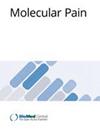Low-frequency electroacupuncture exerts antinociceptive effects through activation of POMC neural circuit induced endorphinergic input to the periaqueductal gray from the arcuate nucleus
IF 2.8
3区 医学
Q2 NEUROSCIENCES
引用次数: 0
Abstract
It has been widely recognized that electroacupuncture (EA) inducing the release of β-endorphin represents a crucial mechanism of EA analgesia. The ARC is a vital component of the endogenous opioid peptide system. However, the specific mechanisms how EA facilitates the release of β-endorphin within the ARC, eliciting analgesic effects are yet to be elucidated. In this study, we conducted in vivo and in vitro experiments by transcriptomics, microdialysis, photogenetics, chemical genetics, and calcium imaging, combined with transgenic animals. Firstly, we detected 2Hz EA at the Zusanli (ST36) increased the level of β-endorphin and transcriptional level of POMC. Our transcriptomics profiling demonstrated that 2Hz EA at the ST36 modulates the expression of c-Fos and Jun B in ARC brain nuclear cluster, and the transcriptional regulation of 2Hz EA mainly occur in POMC neurons by immunofluorescence staining verification. Meaning while, 2Hz EA specifically activated the cAMP-PKA-CREB signaling pathway in ARC which mediating the c-Fos and Jun B transcription, and 2Hz EA analgesia is dependent on the activation of cAMP-PKA-CREB signaling pathway in ARC. In order to investigate how the β-endorphin produced in ARC transfer to integration center PAG, transneuronal tracing technology was used to observe the 2Hz EA promoted the neural projection from ARC to PAG compared to 100Hz EA and sham mice. Inhibited PAGGABA neurons, the transfer of β-endorphin from the ARC nucleus to the PAG nucleus through the ARCPOMC-PAGGABA neural circuit. Furthermore, by manipulating the excitability of POMC neurons from ARCPOMC to PAGGABA using inhibitory chemogenetics and optogenetics, we found that this inhibition significantly reduced transfer of β-endorphin from the ARC nucleus to the PAG nucleus and the effectiveness of 2Hz EA analgesia in neurological POMC Cre mice and C57BL/6J mice, which indicates that the transfer of β-endorphin depends on the activation of POMC neurons prefect from ARCPOMC to PAGGABA.低频电针通过激活POMC神经回路诱导弓状核内啡肽能输入丘脑周围灰发挥抗痛觉作用
人们普遍认为,电针诱导释放β-内啡肽是电针镇痛的重要机制。ARC 是内源性阿片肽系统的重要组成部分。然而,EA如何在ARC内促进β-内啡肽的释放并引发镇痛效应的具体机制尚待阐明。在本研究中,我们通过转录组学、微透析、光遗传学、化学遗传学和钙成像等方法,结合转基因动物,进行了体内和体外实验。首先,我们在祖山里(ST36)检测到2Hz EA提高了β-内啡肽水平和POMC的转录水平。我们的转录组学分析表明,ST36的2Hz EA调节了ARC脑核团中c-Fos和Jun B的表达,通过免疫荧光染色验证,2Hz EA的转录调控主要发生在POMC神经元中。这意味着,2Hz EA特异性地激活了ARC中介导c-Fos和Jun B转录的cAMP-PKA-CREB信号通路,而2Hz EA镇痛依赖于ARC中cAMP-PKA-CREB信号通路的激活。为了研究ARC产生的β-内啡肽如何转移到整合中枢PAG,研究人员利用跨神经元追踪技术观察了2Hz EA与100Hz EA和假小鼠相比促进了ARC到PAG的神经投射。抑制PAGGABA神经元,β-内啡肽通过ARCPOMC-PAGGABA神经回路从ARC核转移到PAG核。此外,我们还利用抑制性化学遗传学和光遗传学操纵了 POMC 神经元从 ARCPOMC 到 PAGGABA 的兴奋性、这表明β-内啡肽的转移依赖于从ARCPOMC到PAGGABA的POMC神经元的激活。
本文章由计算机程序翻译,如有差异,请以英文原文为准。
求助全文
约1分钟内获得全文
求助全文
来源期刊

Molecular Pain
医学-神经科学
CiteScore
5.60
自引率
3.00%
发文量
56
审稿时长
6-12 weeks
期刊介绍:
Molecular Pain is a peer-reviewed, open access journal that considers manuscripts in pain research at the cellular, subcellular and molecular levels. Molecular Pain provides a forum for molecular pain scientists to communicate their research findings in a targeted manner to others in this important and growing field.
 求助内容:
求助内容: 应助结果提醒方式:
应助结果提醒方式:


